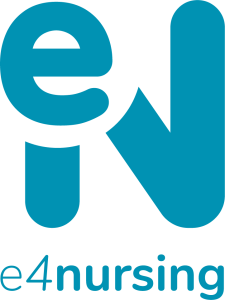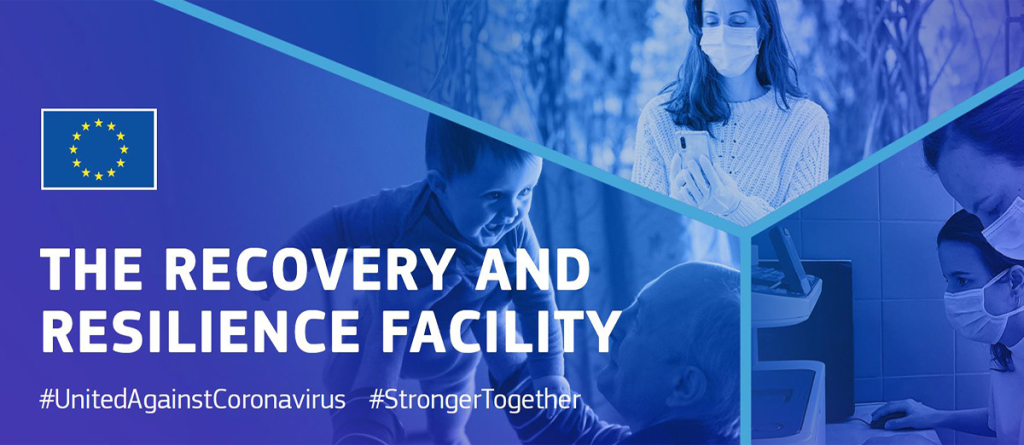E4Nursing.eu Project
Over the past three decades, the Nursing School of Porto has achieved substantial acclaim, both nationally and internationally, for its pioneering efforts in developing nursing information applications. These applications seamlessly integrate taxonomies, such as the widely recognized International Classification for Nursing Practice (ICNP). Currently, these applications are an integral part of the daily workflow for over 90% of nurses in Portugal.
The Center for Research and Development in Nursing Information Systems at the Nursing School of Porto – Portugal (CIDESI-ESEP) stands as one of the 14 globally accredited centers by the International Council of Nurses (ICN) since 2010. Presently, it comprises a team of 17 researchers, IT engineers, and several doctoral students who collectively contribute to the advances in this area.

Since 2014, CIDESI-ESEP has undergone significant advancements, particularly in the development of a multilingual Nursing Ontology known as the “NursingOntos” project. This initiative proposes a structured framework wherein a defined set of concepts within the nursing domain and their relationships are specifyed, providing a formal representation of nursing knowledge.
Since 2019, NursingOntos has garnered recognition as a reference matrix for representing the key entities involved in the nursing care process in Portugal. Acknowledged by the Order of Nurses (National Nurses Association – an ICN member), this recognition enables all systems incorporating NursingOntos in their backend to effectively document, process, and share nursing information at the national level.
NursingOntos relies on a structured data model comprising interconnected tables. These tables include various classes of information, strategically representing the pivotal components of the decision-making process in line with nursing care planning moments. These elements include initial “assessment and evolution data” items, “nursing diagnoses”, “objectives”, and “interventions”. The model is built on hierarchical and conditional relationship schemes, employing a “If… then” type logic. This design ensures the adaptability of NursingOntos for integration into the backend of any electronic health record system.
Considering its distinctive features, NursingOntos streamlines the transition to nursing information systems that go beyond documentation by seamlessly integrating clinical decision support systems, thereby elevating their overall functionality and effectiveness.
Structured in nursing domains of attention and directed for diverse clients including patients, caregivers, parents, and families, this ontology is mapped with taxonomies such as ICNP and Snomed CT. Additionally, it adheres to ISO standards, fostering both semantic and technical interoperability across various environments, even on an international scale.
There is an escalating interest in a nursing ontology from multiple entities, indicating the anticipation of its integration into the daily routines of nursing care in the near future. The ongoing translation and validation efforts into different languages are poised to facilitate the gradual scaling of this solution to an international context.
In this context, CIDESI-ESEP evolved to the development of an educational application – e4nursing (“enhancing expertise and empowering education for nursing”) -, a multilingual educational software, that operates in a plug-and-play web-based environment, created through a collaborative effort between ESEP and the software company VirtualCare®, which incorporates NursingOntos into its backend, and is specifically designed for training nursing students in the complex processes of care planning and clinical decision-making.
This educational platform integrates an expert knowledge structure founded on “restriction” or “advising” relationships, serving as a valuable resource for designing decision support systems. Through e4nursing, students can choose various nursing domains, select pertinent assessment data for diagnosis identification, define objectives, and prescribe interventions. The platform facilitates the automatic creation of a nursing care plan based on the generated information.
Introduced in 2020, this software is presently employed across 64 teaching units, spanning from the initial phase of pre-graduation courses to the concluding phase of postgraduate courses. Its utilization extends to more than a thousand students per semester, highlighting its widespread adoption within the nursing curriculum. In this context, the e4nursing software has achieved a notable level of maturity, positioning itself at Technology Readiness Levels (TRL) 7-8. This maturity is attributed to its continuous operational workload for almost four years, indicating a robust and well-established technological readiness.
These advancements have positioned ESEP as an integral part of a broad consortium of institutions within the Health from Portugal (HfPT) agenda. The primary mission of this consortium is to enhance the competitiveness of the national health value chain. This is achieved by emphasizing the knowledge generated and accessible in higher education institutions, research institutes, hospitals, and companies, all within a framework that prioritizes development, sustainability, and the overarching goal of achieving more and better health for all.
Subject to funding, in the context of the Recovery and Resilience Facility (RRF), this health cluster aspires to establish itself as a dynamic force, acting as a “mobilizing, aggregating, and catalyzing agent” within the health ecosystem. With a strategic emphasis on innovation, digitalization, and the “data economy,” the goal is to position Portugal as a world reference hub in the design, development, and production of advanced solutions for health markets. This positioning will be achieved through a commitment to innovation and technology.


CIDESI-ESEP actively engages in various initiatives aimed at establishing the E4nursing.pt Project at the national level and simultaneously creating the E4nursing.eu Project on an international scale. These communities are centered around the products NursingOntos and e4nursing. The overarching objective of participating in this project is to systematically scale and validate these solutions for the global market.
This challenge opens up numerous opportunities, particularly in the realms of “Smart Health” and “Smart Health Education” solutions. Additionally, it explores the potential in the “data economy” within the health sector, acknowledging the significance of data related to nursing care in this evolving landscape.
HfPT Key Areas
- Development of smart health solutions aimed at the digital MedTech segment;
- Creation of a national smart health data repository of international reference;
- Enabling the growth and sophistication of the clinical studies segment in the country; and
- Creating solutions that enhance the potential of the ecosystem for collecting and benchmarking clinical data and associated costs with healthcare provision.
A consortium comprising nearly a hundred public and private co-promoters will collaboratively tackle these challenges. These entities complement each other at both technical and technological levels, pooling the essential capabilities to attain the established objectives. The overarching aim is to introduce over 100 new products, services, and solutions by the year 2025.
Project
Name
HfPT – Health from Portugal
Acronym
HfPT
Project code
C630926586-00465198
Investment name
RE-C05-i01.01 – Mobilizing Agendas/Alliances for Business Innovation
Funding
Global budget
70,27 million €
European Union financial support for ESEP
669.317,62€
Action Period
Start date
01/11/2021
End date
31/12/2025
Aims
At this stage, the various national projects are in the process of being designed, tailored to the specific scale of each partner. While acknowledging the need to address unique considerations in each context and partner institution, the overarching objectives of the E4nursing.eu Project are outlined as follows:
- Validate, expand and stabilize the utilization of e4nursing across diverse environments, organizational cultures, and nursing teaching/learning scenarios;
- Enhance the training of nursing students in care planning and clinical decision-making processes;
- Refine and customize the functionalities of e4nursing; and
- Expand the content matrix of NursingOntos.
Milestones
The principal milestones of the “E4nursing.eu Project” include:
- By March 2024 – formalization of partnership protocols (agreement letters);
- Until July 2024 – Validation and stabilization of different translations of the ontology by the partners, through access to NursingOntos browser, utilizing a dedicated software tool. Concurrently, training sessions on the use of e4nursing, provided by CIDESI-ESEP, will be conducted for each partner institution;
- September 2024 to February 2025 – Comprehensive implementation of e4nursing in a learning unit within each partner institution;
- February to July 2025 – evaluation of the project.
Throughout all phases of this project, each partner institution involved will receive dedicated consultancy from CIDESI-ESEP.
Partners
Regarding the E4nursing.eu Project, the collaborating partners currently include:
Evaluation and Outcomes
The project operates on a constructivist profile matrix, characterized by an inductive nature and a focus on enhancing the user experience. The evaluation process serves two purposes. Firstly, it adopts a “formative” approach, drawing on the model proposed by DeLone & McLean (2003), with a specific emphasis on either “users” or “information”. Secondly, the “theoretical profile” (Burkle et al., 2001; Kaplan & Shaw, 2003) aims to generate knowledge about the phenomenon. This involves engaging a panel of international experts to scrutinize the material emerging from the evaluation of a “formative” nature.
By the project’s conclusion, it is anticipated that both products (NursingOntos and e4nursing) will undergo updates, incorporating diverse perspectives on care planning derived from their utilization in various international contexts. This evolution will pave the way for customized versions of NursingOntos tailored to the specific requirements of each participating country. With this, there is an inherent intention of publishing, with the partners, all the work conducted throughout the different project phases.
This participation offers an invaluable opportunity to gain insights into the actual requirements of nursing information for Electronic Health Record (EHR) interoperability, delving into the use of classified language, namely ICNP and Snomed CT. Furthermore, it contributes significantly to establishing a formal representation of nursing knowledge at international level.
Research Team from ESEP
Ernesto J. Morais
Principal Investigator
Nursing School of Porto
Inês Cruz
Nursing School of Porto
Abel Paiva
Nursing School of Porto
Maria Antónia Paiva
Nursing School of Porto
Alexandrina Cardoso
Nursing School of Porto
Joana Campos
Nursing School of Porto
Alice Brito
Nursing School of Porto
Paula Sousa
Nursing School of Porto
Filipe Pereira
Nursing School of Porto
Paulo Parente
Nursing School of Porto
Fernanda Bastos
Nursing School of Porto
Rita Fernandes
Nursing School of Porto
Fernando Oliveira
Nursing School of Porto
Júlia Neto
Nursing School of Porto


